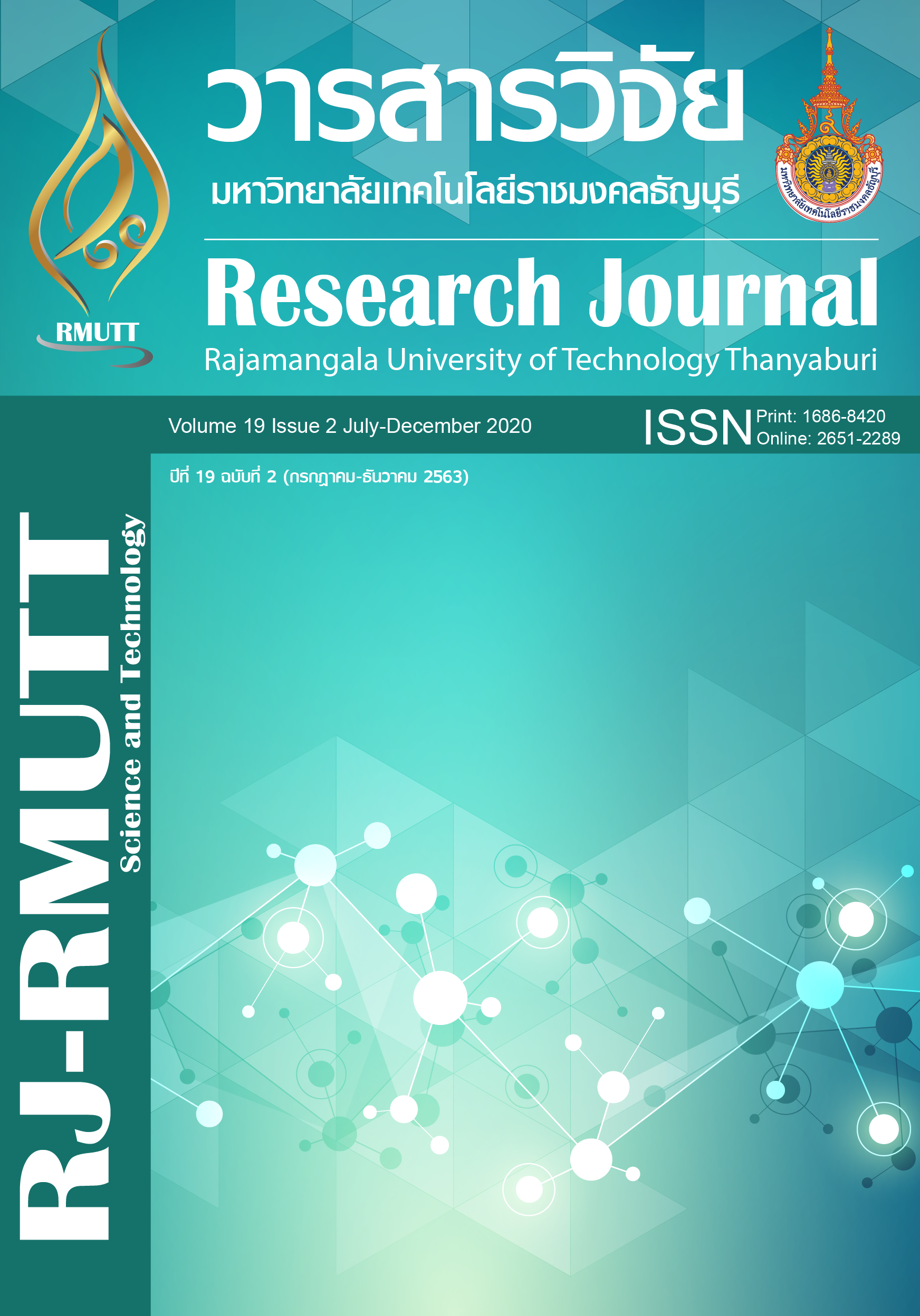Management of Chemicals and Hazardous Waste in Environmental Engineering Laboratory Rajamangala University of Technology Suvarnabhumi
Main Article Content
Abstract
Chemicals are used in studies, experiments, and research from the laboratory called chemical wastes, that may be in the form of solids, liquids, or gases. In case of improper handling, these wastes probably affect human health and contaminate the environment. This project was studied at the environmental engineering laboratories of the Rajamangala University of Technology Suvarnabhumi. The purpose of this project is to create a management system for chemicals and hazardous wastes from laboratories, and to evaluate the knowledge of students who are laboratory users. This study can be divided into 3 parts that are chemical management in the laboratory, hazardous waste management, and prevention of hazards in the laboratory. The information systems and chemical storage platform using the GHS systems (Globally Harmonized System for Classification and Labeling of Chemicals) were investigated and were able to classify the 3 types of chemicals according to hazards in the laboratory that were physical hazards, health hazards, and environmental hazards. For chemical waste management, the studied laboratory generated hazardous liquid wastes which were collected into corrosion-resistant containers, and hazardous solid wastes were managed by preparing a suitable container in order to collect wastes during waiting for appropriate disposal. The aspect of safety and prevention of the hazards in laboratories was developed the media to communicate to all laboratory users that are signboard and video regarding to hazard types, chemical waste types, and laboratory safety. The researcher evaluated the comprehension of 48 students by conducting pre-test and post-test in 3 studied parts. The results showed that students had more knowledge in all aspects. The increase of knowledge for chemical management in the laboratory, hazardous waste management, and prevention of hazards in the laboratory was 36%, 27%, and 24, respectively. This obviously indicates that the students understand the laboratory management system, which leads to use the laboratory much more correctly and safely.
Article Details

This work is licensed under a Creative Commons Attribution-NonCommercial-NoDerivatives 4.0 International License.
References
Walters AUC, Lawrence W, Jalsa NK. Chemical laboratory safety awareness, attitudes and practices of tertiary students. Safety Sci. 2017;96:161-71.
โครงการยกระดับมาตรฐานความปลอดภัยห้องปฏิบัติการวิจัยในประเทศไทย. แนวปฏิบัติเพื่อความปลอดภัยในห้องปฏิบัติการ. พิมพ์ครั้งที่ 1. กรุงเทพฯ. สานักงานคณะกรรมการวิจัยแห่งชาติ; 2555.
Winder C, Azzi R, Wagner D. The development of the globally harmonized system (GHS) of classification and labelling of hazardous chemicals. J Hazardous Mater. 2005;125(1):29-44.
เสาวนีย์ สัตยดิษฐ์. การจัดการของเสียชีวภาพและของเสียสารเคมีในห้องปฏิบัติการวิจัยวิทยาศาสตร์ทางสัตวแพทย์คณะสัตวแพทยศาสตร์ มหาวิทยาลัยมหิดล. Journal of Safety and Health. 2013;6(23):15-23.
วรพจน์ กนกกันฑพงษ์. การจัดการของเสียอันตรายในห้องปฏิบัติการ. วารสาร มฉก.วิชาการ. 2550;11(21):95-102.
กรมควบคุมมลพิษ. คู่มือการจัดการของเสียห้องปฏิบัติการสิ่งแวดล้อม. กรุงเทพมหานคร: กระทรวงทรัพยากรธรรมชาติและสิ่งแวดล้อม. 2547.
นภัสนันท์ จันทรา. การจัดการของเสียอันตรายของห้องปฏิบัติการในโรงงานอุตสาหกรรมอาหารทะเล เครือบริษัทพัฒนากรุ๊ฟ [วิทยานิพนธ์ปริญญามหาบัณฑิต]. สงขลา: มหาวิทยาลัยสงขลานครินทร์; 2554.
โครงการยกระดับมาตรฐานความปลอดภัยห้องปฏิบัติการวิจัยในประเทศไทย. แนวปฏิบัติเพื่อความปลอดภัยในห้องปฏิบัติการ [อินเทอร์เน็ต]. กรุงเทพฯ: จุฬาลงกรณ์มหาวิทยาลัย; 2555 [สืบค้นเมื่อวันที่ 5 เม.ย.2563]. จาก: http://esprel.labsafety.nrct.go.th/home.asp.
ธีรยุทธ วิไลวัลย์, สุชาตา ชินะจิตร, จุฑามาศ ทรัพย์ประดิษฐ์. ของเสียจากห้องปฏิบัติการที่นักเคมี(มัก)มองข้าม. กรุงเทพฯ: โรงพิมพ์แห่งจุฬาลงกรณ์มหาวิทยาลัย; 2560.


